African Sleeping Sickness
African Sleeping Sickness, also known as Human African Trypanosomiasis (HAT), is a parasitic infection caused by the protozoan parasites Trypanosoma brucei gambiense and Trypanosoma brucei rhodesiense. Transmitted through the bite of infected tsetse flies, this neglected tropical disease primarily affects sub-Saharan Africa. Two forms of the disease exist, with T. b. gambiense causing the chronic form prevalent in West and Central Africa, and T. b. rhodesiense causing the acute form found in East Africa. The initial stage of the disease is characterized by fever, headaches, joint pain, and itching. As the infection progresses, parasites invade the central nervous system, leading to neurological symptoms such as sleep disturbances, confusion, and eventually, a profound sleep-wake cycle disruption, giving the disease its name. Without proper treatment, African Sleeping Sickness has the potential to result in fatality. Treatment options depend on the stage of the disease and the species of the infecting parasite. Early-stage cases may be treated with medications such as pentamidine or suramin, while advanced cases often require drugs like melarsoprol or eflornithine. Control efforts involve vector control measures, such as tsetse fly eradication, and surveillance programs to identify and treat cases promptly.

Francis J Castellino
University of Notre Dame, United States
Ranjan Ramasamy
ID-FISH Technology, United States
Saurabh Chattopadhyay
University of Kentucky College of Medicine, United States
Rico Leonardo Lizbinski
Northern Light Health, United States
Sasha Leibholz
New York Presbyterian Columbia/Cornell, United States
Lauren Gruffi
New York Presbyterian Columbia/Cornell, United States



Title : Pathogen-derived noncanonical epitopes: Are they valuable targets for novel vaccinations and shall we be concerned about autoimmune responses?
Michele Mishto, Francis Crick Institute, United Kingdom
Title : Bioterrorism through the ages: Historical perspective, emerging threats, and medical countermeasures
Claudia Ferreira, Sorbonne University, France
Title : Changing population immunity to COVID-19 in the context of infection, vaccination, and emerging SARS-CoV-2 variants
Ranjan Ramasamy, ID-FISH Technology, United States
Title : Extensively drug-resistant bacterial infections: Confronting a global crisis with urgent solutions in prevention, surveillance, and treatment
Yazdan Mirzanejad, University of British Columbia, Canada
Title : Measles vaccination coverage indicators in 2023 and advance towards measles elimination and eradication by 2030
Pedro Plans Rubio, College of Physicians of Barcelona, Spain
Title : Severe influenza and other related respiratory infection cases during Omicron era in Japan
Masafumi Seki, Saitama Medical University International Medical Center, Japan